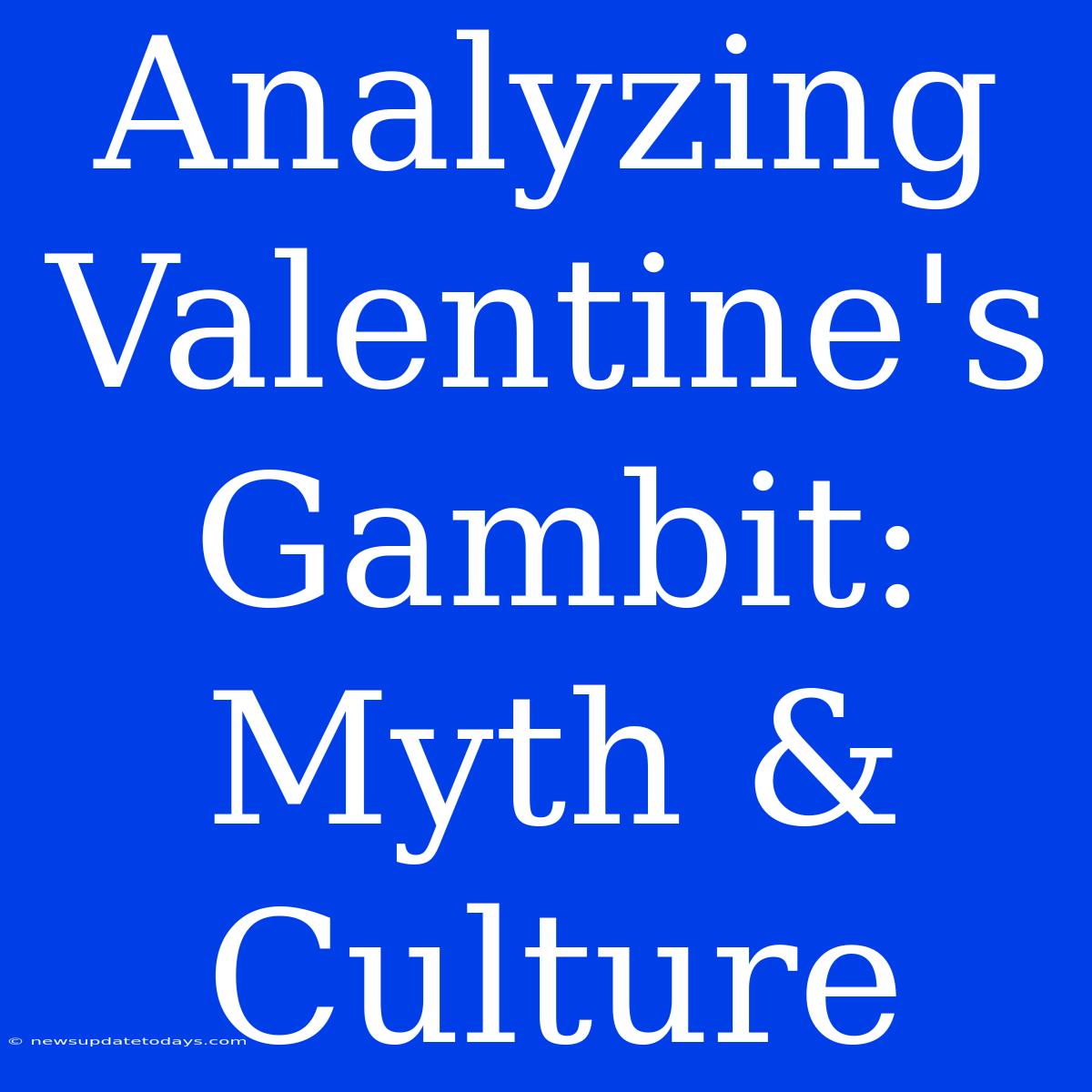Analyzing Valentine's Gambit: Myth & Culture
Valentine's Day. The day of hearts, flowers, chocolates, and... intense pressure? This seemingly simple holiday is steeped in a rich, and often contradictory, tapestry of myth and culture. Let's delve into the realities behind the romantic gambit, separating fact from fiction and exploring the diverse ways Valentine's Day is celebrated globally.
The Myths Surrounding St. Valentine
The very origins of Valentine's Day are shrouded in mystery. Several St. Valentines existed during the Roman Empire, making it difficult to pinpoint the exact saint associated with the holiday. Popular narratives range from a priest secretly marrying couples against Emperor Claudius II's orders to a Valentine who sent the first "Valentine" – a love letter – from prison before his execution. The truth? Likely lost to history. The legend, however, is far more potent than any historical record.
The Evolution of a Commercial Holiday
What's undeniable is Valentine's Day's transformation into a commercial powerhouse. From greeting cards to extravagant dinners, the holiday has become a significant economic event. This commercialization, however, has also led to criticism. Some argue that it fosters unrealistic expectations about romance, creating pressure to conform to a specific ideal of love and affection.
Global Variations: Beyond the Chocolate Heart
The Western perception of Valentine's Day—red roses, heart-shaped boxes of chocolates—doesn't represent the global experience. Many cultures celebrate love and relationships in vastly different ways:
- Japan: Women traditionally give chocolates to men, with "giri-choco" (obligatory chocolate) for colleagues and "honmei-choco" (true feelings chocolate) for loved ones. A month later, on White Day, men reciprocate. This unique cultural twist emphasizes the reciprocal nature of relationships.
- South Korea: Similar to Japan, the exchange of chocolates plays a significant role, but with an added layer of complexity based on the relationship dynamics.
- Philippines: Mass weddings are a common sight on Valentine's Day, symbolizing collective commitment and shared joy.
- Brazil: Valentine's Day is celebrated on June 12th, associated with Saint Anthony, the patron saint of marriage.
- Denmark & Norway: Anonymous love letters, known as "valentines," are traditionally sent with the sender's identity concealed.
These examples highlight the diverse interpretations of love and affection across cultures. The commercial aspects of the holiday are often less prominent in these traditions, with a greater focus on cultural rituals and social dynamics.
Beyond the Romance: Friendship and Self-Love
In recent years, a shift has emerged toward recognizing the importance of platonic love and self-love on Valentine's Day. Celebrating friendships and embracing self-care has become a refreshing counterpoint to the romantic pressure often associated with the holiday. This inclusivity reflects a broader societal movement towards recognizing the diverse forms of love and connection.
Conclusion: Decoding the Valentine's Day Paradox
Valentine's Day remains a paradoxical holiday. Its origins are uncertain, its commercialization is undeniable, and its cultural expressions are incredibly diverse. While the pressure to conform to certain romantic ideals remains a valid concern, the holiday also provides an opportunity to celebrate love in its many forms – romantic, platonic, and even self-love. Understanding the myth and culture behind Valentine's Day allows us to navigate its complexities and appreciate its multifaceted nature. The key is to approach it with awareness and intentionality, making it a meaningful celebration aligned with your personal values.

